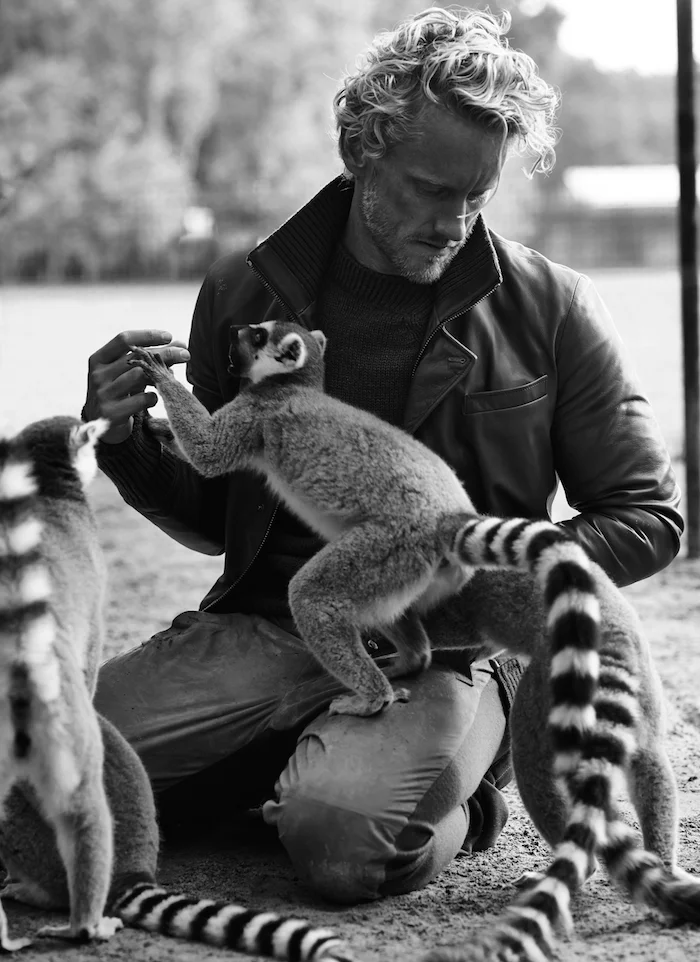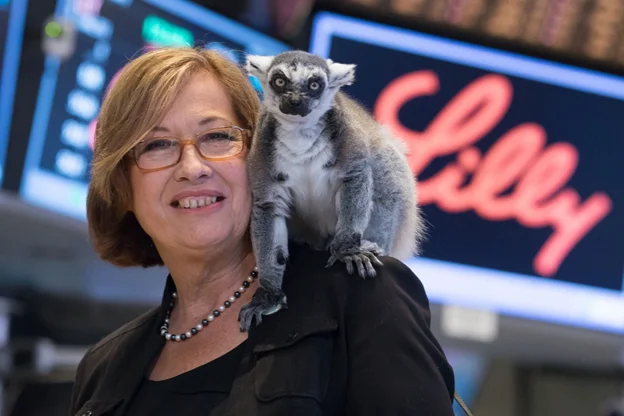Madagascar's Lemur Lady Dr. Patricia Wright Fights Their Extinction
/Kevin Rice As Peter Beard, Lensed By Blair Getz Mezibov For Out Magazine
Madagascar: The Eighth Continent
When one thinks of Madagascar, lemurs (one is pictured above with model Kevin Rice) come to mind immediately. These often but not exclusively nocturnal, insectivorous primates are recognized by their small body, a long nose and intense, very large eyes.
It is only because of the island’s isolation, that lemurs remain alive in Madagascar, the only place they inhabit on earth. “It’s believed that around 160 million years ago, Madagascar was attached to the African mainland as part of the super continent Gondwanaland (formed of Africa, South America, Australia, Antarctica, India and Madagascar,” writes WildMadagascar.org.
According to Russell Mittermeier in ‘The Eighth Continent’, although Madagascar “is only one of 92 countries with wild primate populations, it is alone responsible for 21 percent (14 of 65) of all primate genera and 36 percent (five of 14) of all primate families, making it the single highest priority” for primate conservation. “Madagascar is so important for primates that primatologists divide the world into four major regions: the whole of South and Central America, all of southern and southeast Asia, mainland Africa, and Madagascar, which ranks as a full-fledged region all by itself.”
Note that many scientists disagree, believing that the animals ‘rafted’ to Madagascar.
One of the World’s Most Endangered Primates
Because of its island isolation, most of its plant and animal species on Madagascar are found nowhere else in the world. The island has existed as a hotbed of biodiversity, a subject I wrote about previously.
Today, 79 percent of Madagascar’s original rain forest habitat has already been cleared by humans, leaving the future of nature’s laboratory in grave danger. This bleak reality includes the future of lemurs.
In 2012, the Union for the Conservation of Nature described 91 percent of the 103 known species and subspecies of lemurs as threatened with extinction; making it one of the highest levels of threat ever recorded for a group of mammals.
How smart is a Lemur? CNN
Lemur Lady Dr. Patricia Wright
Weeks ago IMAX movie viewers were treated to ‘Island of Lemurs: Madagascar’, a spectacular journey into this magnificent country narrated by Morgan Freeman. Far more than a travelogue, the documentary follows Dr. Patricia Wright’s mission to help lemurs. Dr. Wright is considered to be one of the world’s foremost experts on lemurs, based on her work in Ranomafana National Park, Madagascar, an integrated conservation and development project that she spear-headed in 1991.
Dr. Patricia C. Wright in Madagascar. Credit Drew Fellman/Warner Bros. Entertainment
An August 2014 New York Times article profiled Dr. Wright and her fight to prevent what she calls a “lemur holocaust.”
The Park protects 43,500 hectares of forest, including rain forests, and 12 lemur species. In addition, Wright is the founder of the Centre ValBio Research Station located on the edge of the Park. Centre ValBio, which is partially funded by the National Science Foundation, is a pivotal hub for researching rainforest biodiversity and conservation and for conducting outreach to the community and policy makers.
Island of Lemurs: Madagascar Official Trailer #1
It was a divorce coupled with a serendipitous encounter between Patricia Wright and an owl monkey in a New York City pet store that inspired the mother and housewife to reinvent herself as an award-winning Ph.D. primatologist and conservationist devoted to lemurs.
After graduate school, Dr. Wright got a job at Duke University’s Primate Center, home to a large color of lemurs. (Duke is also home to bonobo research, another topic near and dear to my heart.)
Multifaceted Approaches
A professor at Stony Brook University, Wright’s approaches to saving Madagascar’s lemurs and their forest habitat involves combining science and conservation. “You can’t save what you don’t understand,” she says.
Wright’s strategy is to partner with Malagasy villagers to develop conservation strategies that are scientifically sound and give villagers a stake in the sustainability of Madagascar’s rainforests. “With more than 75 percent of Madagascar’s population surviving on or below $1.25 per day, these solutions include promoting ecotourism,” writes the National Science Foundation.
Presently, 30,000 visitors come to Ranomafana each year and they are housed in 26 small, locally-owned hotels around the park. Dr. Wright told the New York Times:
We made a social contract with the villagers. If they’d stop going into the forest to hunt, we’d make sure they had schools and clinics. And that’s worked well. Right now, we have a problem with people coming from elsewhere to do illegal gold mining in the forest. It’s the villagers who go to the government: “Get these people out of our park.”
An Award-Winning Career
Throughout her career, Wright has received many awards, including the MacArthur “Genius Award” in 1989. In 1914, Wright was named the 2014 winner of the Indianapolis Prize, the world’s leading award for animal conservation. Three days later, Wright—accompanied by several lemurs—rang the New York Stock Exchange’s Closing Bell.
Dr. Patricia Wright and lemurs at New York Stock Exchange
It appears that female bonobos may not be the only primates who call the shots. Asked this question by the New York Times, Dr. Wright answers:
The matter that originally brought you to Madagascar — sex role divisions among primates: what has observing lemurs taught you?
That this old saw about that male dominance being the natural order of things ought to be more rigorously examined. Among lemurs, females lead. They go into the fruit tree first, and the males must stay out until the females decide they can come in. Interestingly, the female leaders don’t strut around a lot. They work out the relationships in the group peaceably.
That’s made me think it might be time for our species to do things more the lemur way.



